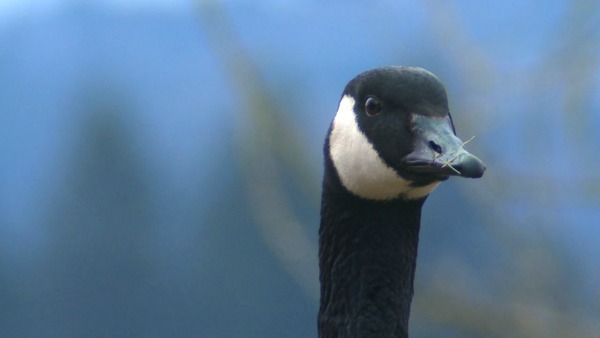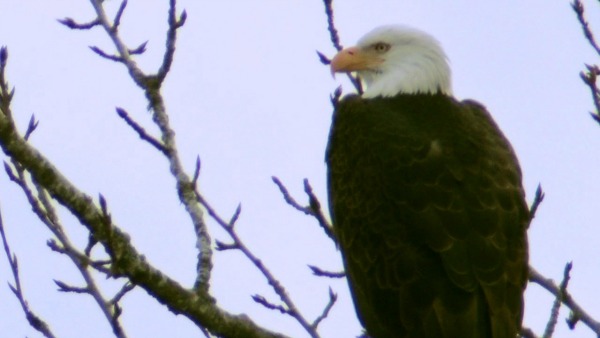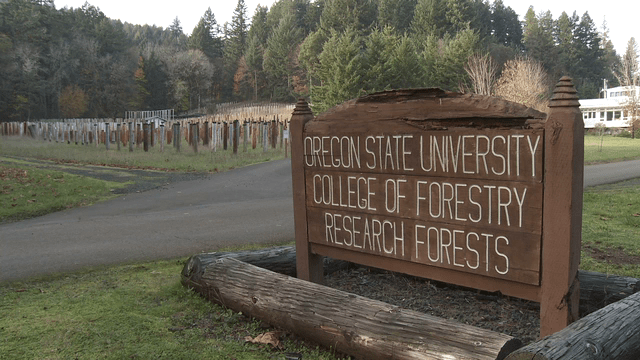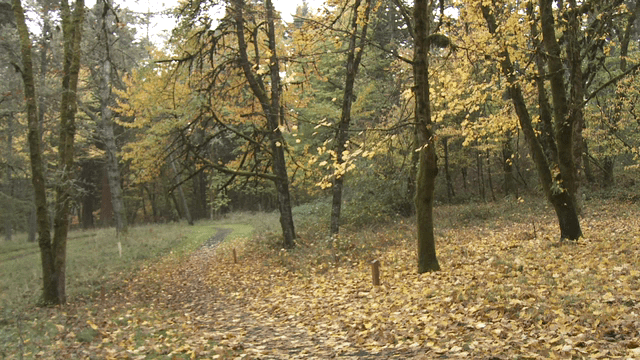The trails less traveled are the ones that I enjoy the most – especially when there’s a chance that the adventure holds on to Oregon history. At the south end of the Willamette Valley, three outdoor adventures combine hiking with unique history and the chance to trek into new territory.
The Canada geese come by thousands and fill the sky with urgent cries that seem to celebrate their arrival. Endless skeins of the big birds are like dark silky threads that weave a fine, feathery mosaic that seem to mesmerize, transfix or just plain confound you. Joel Geier says that is part of the pleasure of hiking and watching along the Willamette Valley Birding Trail at places like William Finley National Wildlife Refuge that is located 15 miles south of Corvallis.
“Winter is sometimes considered the slow months for many people, but for birders like me it’s not slow at all. In fact, I can come to Finley Refuge any time of year and find birds.”
Geier should know – he’s a member of Oregon’s Field Ornithologists. His group and other organizations recently joined to identify “birding trails” in Oregon. “If you live in the Portland area or anywhere in the Willamette Valley, the new trails can help you plan your weekend,” said Geier. “Each of the birding loops are unique and special places.”
For example, travel 30 minutes north along state Highway 99 and discover another home for wildlife that was once a practice battlefield for war. 70 years ago, the Oregon Department of Fish and Wildlife’s EE Wilson Wildlife Area was part of historic Camp Adair, a training center for troops bound for battle during World War II. Nearly 40,000 soldiers trained across 65,000 acres to fight in European and Pacific Theatres.
Andy Fitzpatrick, an ODFW Wildlife Technician, said that Camp Adair seemed to grow up “overnight” to become one of the state’s largest cities in the 1940s. “They built nearly 1800 buildings in just a matter of months,” noted Fitzpatrick.
The scale of old Camp Adair is huge and the evidence of those times is easy to see as you hike the roadways. The old concrete foundations for hundreds of the buildings are everywhere. “The camp’s buildings were built block by block,” said Fitzpatrick. “They were huge buildings 1, 2 and even 3 stories tall. The Historical Society doesn’t want the foundations to be removed either, so they are here to stay.”
The guns of war are long gone from the EE Wilson Wildlife Area and the birds are back and the roadway system makes hiking or biking easy to enjoy. “Today, you can explore the old paved roads [more than 20 miles] that are open for jogging, cycling or even horseback riding,” said Fitzpatrick. “There are wildlife viewing opportunities; even a view blind where you can see raptor species and song birds species that are present throughout the year.”
Just west of EE Wilson, discover another wonderful place to explore at the Peavy Arboretum, a part of the larger McDonald-Dunn Research Forests owned and managed by Oregon State University.
Ryan Brown, the Recreation Manager for the Research Forests, said that the Peavy Arboretum is a “gateway” to the 11,000 acre forests. It is a good place to begin your explorations and “get grounded” in the forest landscape. “Peavy Arboretum began as a collection of varied tree specimens in 1926,” noted Brown. “They are either native northwest tree species or some very interesting tree species from other parts of the West. Each specimen is marked with its name so you can identify it too.”
History runs deep across the forest. It was once the home to a CCC Camp that drew thousands of young men from across the country. Brown noted that the men joined the Civilian Conservation Corps in the early ’30s and were based at the camp to work varied jobs in the Oregon woods.
“They built 39 permanent buildings, so it was here to stay awhile,” said Brown with a chuckle. “They mostly worked on reforestation and firefighting but they also built roads and trails across the forest.”
Few signs of those days remain. But there are exceptions including one massive two-story building that Brown called the “Sign Shop.” The men who worked in the sign shop designed and carved large rustic wooden signs for the Oregon Department of Forestry. The signs were used throughout the state.
A handful of other workshops and buildings are scattered across the Peavy Arboretum and continue to be useful today. In fact, OSU forestry students use the spaces to create products that forest visitors can enjoy too.
Inside one workshop, OSU Senior Sam Dussel was busily cutting, drilling and assembling a log bench to be sold as a “Memorial Bench.” The bench will be placed along one of the many trails in the McDonald-Dunn Forests. Dussel added that the research forests were the reasons he chose to attend OSU. “It’s pretty amazing to come here and see a forest used for recreation and for many other things like timber production, species rehabilitation and all sorts of research projects. It’s been a great opportunity to learn about Oregon forests.”
Brown noted that both the Peavy Arboretum and the McDonald-Dunn Forests trail systems are accessible year round and offer visitors a chance to easily explore a northwest forest.
“We invite people to come and experience nature; especially folks who may not hike in the woods much. This is a place that’s very easy to explore and feel at home in nature.”





